

Our Annual Meetings are now very much a celebration of science, a celebration of TSN activity and a chance to bring the network together for the only time in the year. While giving members the chance to share their experiences, it gives the leadership of TSN an invaluable opportunity to get feedback from its members about how to progress TSN forward, providing more of what our members want. For new members it’s a chance to hear about how we work and get involved in the future.
They have evolved from the Autumn kick-off conferences, typically taking place in the first half-term of the academic year (October time) and since 2000 have featured an entertaining science talk by renowned scientists and science communicators.
The evenings have also become renowned for the Great Giveaway of science equipment donated by local laboratories, a fine buffet and relaxed atmosphere for teachers and scientists to meet and chat over a glass or two of wine. Typically 100-150 people attend this event which is traditionally held at the John Innes Centre. Come along with colleagues - it makes a great department outing!Resume's of previous events are listed here showing our wide diversity in keynote speakers ...
2nd Oct. 2000, Our first keynote speaker was Tim Hunkin spoke candidly about safe-cracking and much more, with a talk entitled 'llegal Engineering: A History of Safes and Safecracking.' As described in the flyer, this had nothing to do with TSN but was highly entertaining!
17th Oct 2001, 'Musical squares' was an entertaining exploration of different aspects of sound and hearing presented by Mike and Wendy Gluyas. Musical squares had just returned from an extensive UK and European tour.
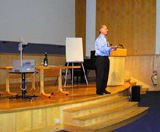 10th Oct 2002. After a short business meeting TV personality Johnny Ball, the popular communicator
10th Oct 2002. After a short business meeting TV personality Johnny Ball, the popular communicator 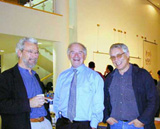 of science and mathematics, entertained us by talking of his long experience as a science communicator with adults and children.
of science and mathematics, entertained us by talking of his long experience as a science communicator with adults and children.
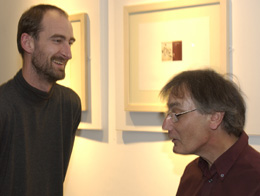 8th Oct 2003. Our Annual Meeting gave new coordinator, Dr. Phil Smith, a first opportunity to meet teacher and scientist members of TSN. After a brief introduction about TSN (principally for the benefit of new members), Phil spoke briefly about his experiences as a partnered scientist and his passion for the continued growth and development of TSN maintaining its 'bottom-up' approach. Phil then introduced the speaker for the event, Prof Andy Watson from the University of East Anglia, who gave a fascinating insight into 'how likely was life to arise on Earth'. Andy's talk included a discussion about the possibility of Life on Mars, the evolution of life on Earth and 'Gaia ' - the earth a whole system - and the anthropic principle.
8th Oct 2003. Our Annual Meeting gave new coordinator, Dr. Phil Smith, a first opportunity to meet teacher and scientist members of TSN. After a brief introduction about TSN (principally for the benefit of new members), Phil spoke briefly about his experiences as a partnered scientist and his passion for the continued growth and development of TSN maintaining its 'bottom-up' approach. Phil then introduced the speaker for the event, Prof Andy Watson from the University of East Anglia, who gave a fascinating insight into 'how likely was life to arise on Earth'. Andy's talk included a discussion about the possibility of Life on Mars, the evolution of life on Earth and 'Gaia ' - the earth a whole system - and the anthropic principle.
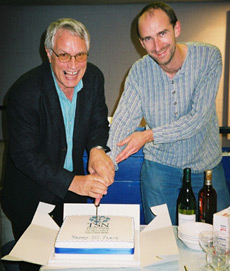
5th Oct 2004. Our tenth Annual Meeting (held for the first and only time at UEA) was a sparking celebration of TSN's first ten years and set-off the next 10 years with a bang! This year's speaker was the Reverend Ron Lancaster founder of the internationally acclaimed Kimbolton Fireworks whose talk 'Fireworks: principles and practice' was well received by new and existing members alike. No birthday is complete without a cake and after the cutting ceremony generous slabs of cake were shared among the gathered teachers and scientists.
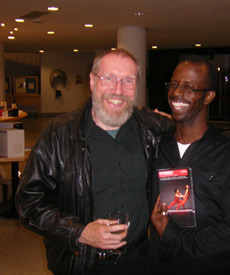 11th Oct 2005, The night before Rambert Ballet Company arrived in Norwich with their latest triple bill that featured the new production 'Constant Speed' for Einstein Year, teachers and scientists got a behind-the-scenes look at the science and art behind the production.
11th Oct 2005, The night before Rambert Ballet Company arrived in Norwich with their latest triple bill that featured the new production 'Constant Speed' for Einstein Year, teachers and scientists got a behind-the-scenes look at the science and art behind the production.
'Constant Speed' used contemporary dance to illustrate Einstein's three theorems of Brownian Motion, photoelectric effect and special relativity. The evening successfully combined a brief lecture about the science behind the 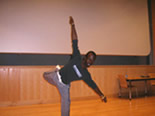 production given by Prof. Ray Rivers from Imperial College (scientific adviser to Mark Baldwin, choreographer) and an illustration of the association between physics, energy and movement by Lincoln Allert, an animateur from Rambert.
production given by Prof. Ray Rivers from Imperial College (scientific adviser to Mark Baldwin, choreographer) and an illustration of the association between physics, energy and movement by Lincoln Allert, an animateur from Rambert.
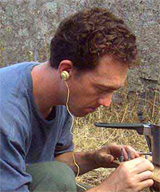 8th Nov. 2006. This years talk, given by Dr. Jonathan Hare, proved extremely popular with teachers and scientists alike as Jonathan revealed some of the secrets behind the Science of 'Rough Science' (the successful BBC TV series). Want to know more tricks of the trade, check out Jonathan's website, www.creative-science.org.uk
8th Nov. 2006. This years talk, given by Dr. Jonathan Hare, proved extremely popular with teachers and scientists alike as Jonathan revealed some of the secrets behind the Science of 'Rough Science' (the successful BBC TV series). Want to know more tricks of the trade, check out Jonathan's website, www.creative-science.org.uk
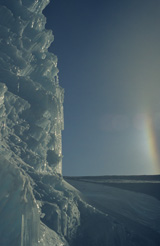
Oct 2007. We marked International Polar Year with an entertaining talk and vivid pictorial account of life in Antarctica given by John Digby, a former British Antarctic Survey scientist and enthusiastic photographer. We were grsateful that John stepped in at relatively short-notice to fulfill this engagement.
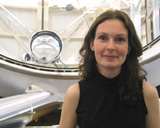 Nov. 2008. With International Year of Astronomy (IYA2009) just around the corner we were delighted that Dr. Lucie Green, solar astronomer and science communicator, was able to join us and give our keynote address at the 2008 TSN Annual Meeting. An excellent talk was supported by stunning images of the sun and videos of solar activity while Lucie described lucidly what the sun meant to her.
Nov. 2008. With International Year of Astronomy (IYA2009) just around the corner we were delighted that Dr. Lucie Green, solar astronomer and science communicator, was able to join us and give our keynote address at the 2008 TSN Annual Meeting. An excellent talk was supported by stunning images of the sun and videos of solar activity while Lucie described lucidly what the sun meant to her.
2009 was a Mammoth year for TSN, and it culminated in our Darwin 200 celebration at the Annual meeting. We launched our new Evolution kit (funded by the CUE East project at UEA) and had Prof. Tony Stuart from the University of Durham as our keynote speaker. The title of his talk linking neatly to a part of the Evolution kit box, was "The Lost World of the West Runton elephant." The Evolution box includes a short 10 minute film about the West Runton Mammoth fossil find from the cliffs of North Norfolk that was 85% complete. Tony was the lead researcher on excavation of the Mammoth when he was curator of geology at Norwich Castle Museum.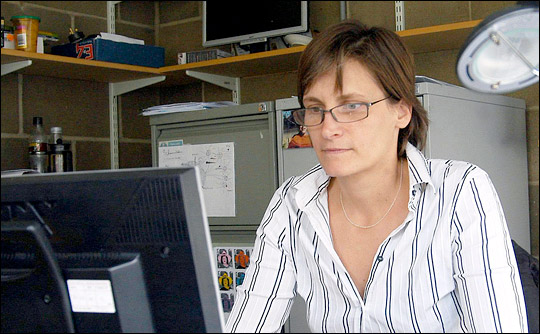
In 2010, we were delighted to welcome Prof. Corinne le Quere from the School of Environmental Science at UEA as our keynote speaker. The title of her talk being “The ocean carbon cycle in a warming climate” Corinne gave a most insightful talk, which provided a perfect backdrop to our regional celebration of our CarboSchools project.
To mark International Year of Chemistry the 2011 TSN Annual Meeting invited Prof. James Clark, to give the keynote address. James is an internationally renowned pioneer for the Green Chemistry movement, and we were delighted that he accepted our invitation to 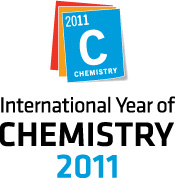 speak addressing this highly topical area.
speak addressing this highly topical area.
He has kindly agreed that a copy of his talk, From waste to wealth using Green Chemistry, can be posted here on our website for use in your classrooms. The talk was extremely well received by those at the meeting and we hope it will prove to be a useful resource for all..
Its not always easy fixing the date of the Annual Meeting to tie in with availability of the Conference Centre and that of our speakers. So we missed out in 2012, as we were trying to find a convenient occasion for Prof. Iain Stewart to join us from the University of Plymouth in between filming commitments. We finally managed it in February 2013, with the well-known TV geologist joining us for an entertaining talk entitled “50-shades of grey – Communicating Rocks.” More details of this event can be found here.
The following year (and tying into the appearance of Evolution into the new primary curriculum), we were delighted to welcome back Prof. Nicky Clayton, professor of comparative cognition from the University of Cambridge and consultant on the recent BBC series ‘Inside the Animal Mind.’ We had worked with Nicky during Darwin Year when she became Scientist in Residence for Rambert Dance and she presented a very accessible introduction to evolutionary ideas based upon her work with corvids providing an insight into the acquisition and use of knowledge in humans.
February 2015, our Annual Meeting combined with birthday party as TSN turned 20. Dr. Marek Kukula (then public astronomer at Royal Observatory, Greenwich) spoke about “Craters, Collisions and Catastrophes” giving a fascinating insight into instances of space rocks hitting the Earth’s surface. Just the stuff birthday parties are made of! To mark this milestone in TSN’s history, we instigated the Chennell-Roberts Annual Lecture, and we were delighted that Marek could give the inaugural lecture.
As a Norfolk-based charity we like to keep our members updated on local developments, and the recent discovery of the Cromer Chalk Reef and the chance to develop a Marine Protected Zone off the North Norfolk coast may have passed some people by. But the images and video shared by Rob Spray from SeaSearch East in our 2016 meeting enlightened everyone as he revealed truly “Hidden Treasures of Norfolk’s Secret Sea”
By the time 2017 came around, it was public knowledge that we had been successful in bringing #DippyonTour to Norwich Cathedral in 2020. In a later than usual event (in July) and to wet people’s appetite, science writer James O’Donoghue spoke about “Why was Dippy so big? The science behind Sauropod gigantism” something he had written about for New Scientist. This was also our first chance to hear what you, our members, want from Dippy’s visit.
Year of Engineering was upon us in 2018 and finally a chance to meet Yasmin Ali and bring her to Norwich. Yasmin, our youngest yet presenter of the Chennell-Roberts lecture spoke candidly about her career journey in the oil and gas industry and a lively discussion followed about encouraging girls into STEM, but particularly Engineering in a talk entitled "Engineering the World"
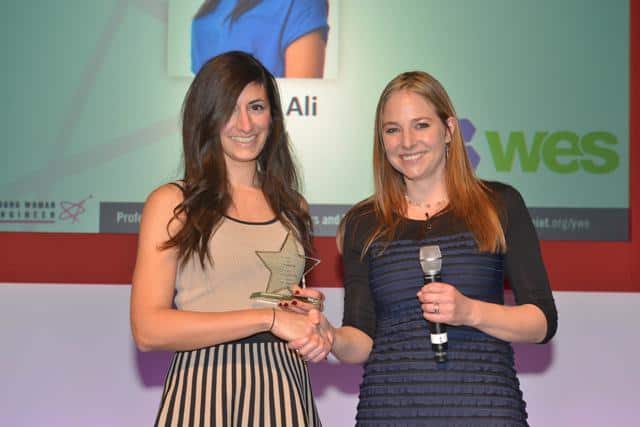
Image: Courtesy of IET
OUR TOP SITES for YEAR OF ENGINEERING (2018)..